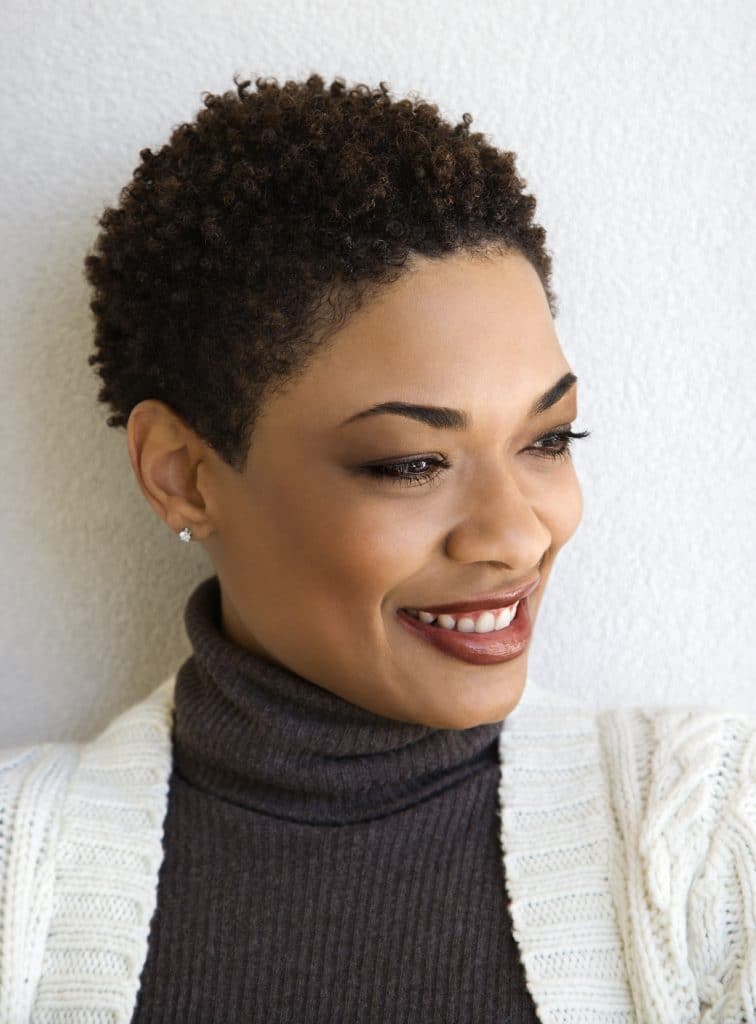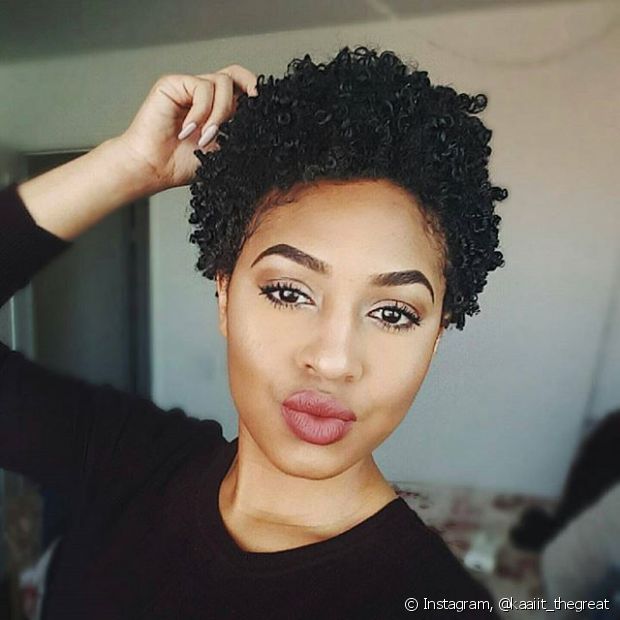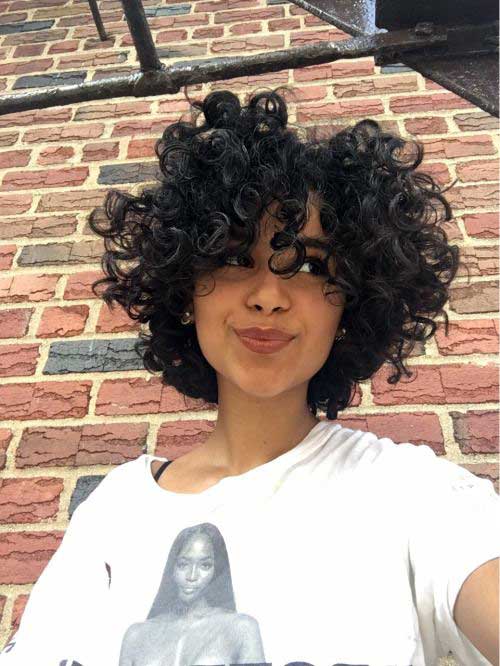Tired of all that hair chemistry? How about starting a hair transition?
This process of transformation may take a while, but once started, you will never be the same, you will surely feel more authentic and empowered!
Natural curly or frizzy hair will leave you more free to create new styles, as well as giving your hair more movement and versatility of hairstyles for everyday life.
But for the hair transition to occur in a healthy way, some care and treatment will be needed in order for the hair to grow and remain strong and resistant.
To find out more about it, keep reading this post and know other information about the capillary transition.

Capillary transition
Many women have kept their hair straight for many years, using various chemical products and treatments that left the strands looking and feeling this way.
However, all this chemistry over time penetrates the hair, changing the structure of the hair, and when you decide not to perform these procedures anymore and return to the natural hairs it is necessary to start a hair transition.
This transition will restructure the hair, but in a gradual and healthy way, often needing cuts to remove the damaged hair, but this in the medium and long term, will result in hydrated, strong and beautiful hair.
But to move forward it is necessary to understand better what the capillary transition is.

What is capillary transition?
The hair transition is the change between the chemical procedures in the hair, for natural hair.
And this is great, because it allows women more freedom of choice when deciding on hairstyles and cuts, which can and should vary, in order to value and improve self-esteem.
But this transition may take a while, since it will occur as the hair grows and that doesn’t happen so fast!
However, the results will be very worthwhile and you will discover a wonderful hair, which until then you did not know.

How to make hair transition?
To make the hair transition it is necessary to eliminate any process or chemical treatment of the hair.
At first, this can be a bit difficult, because you will notice the threads growing and behaving in a way that is unrelated to others, causing an effect of frizz and resected, but calm down, it’ll pass soon!
In the first months of transition may occur the scab hairThis is the birth of hair without chemistry, but without nutrition, giving an aspect of opaque, weak and brittle hair, however, with some care, such as the hair schedule it is possible to improve the health of the hair.
After eliminating the processes with chemicals and smoothing agents it is recommended to wait a few months to cut the wires.
The indicated period is between 2 and 6 months, because in that time, the root threads will be bigger, which will help in the definition, length and effect of the curls.
But for some people, at the beginning a radical transformation, such as a very short cut, can be very impacting, hindering the process of transition and acceptance of the new style, so it is important to leave it to cut the moment you feel comfortable.
But remember, the chemistry in the threads can weaken and delay the growth of the curls, so the sooner you cut, the better the result of nutrition and hydration of the threads.
The way the hair will look, as well as the hairstyles in this growing period can be a concern among women who want to go through the hair transition, but with some tips you can find good and creative ways to tidy up the highlights.
Another important point is that during this period of growth and also after the cut, some care will be needed so that the hair remains healthy and strong.

How to care for your hair during the hair transition?
During the hair transition, some care is necessary and extremely important so that the new texture remains strong and healthy.
In this period, choosing the right products and forms of care is essential, so from the first moment you decide to take on the curls, start with shampoo, conditioner and creams suitable for hair with this curvature.
It is even important to remember that from the moment of the transition decision, all products must respect the new hair formation.
This will help to get the curly threads faster and healthier.

Hair transition products
Unfortunately, there is no product that takes all the chemistry out of the hair immediately, but it is possible to soften the effect scab hair starting with the right capillary schedule and products.
It is recommended that from the beginning of the hair transition, start with the use of products low-poo or no-pooThese are more natural washing methods, which harm the thread less and consequently prevent damage such as dryness and split ends, which the chemistry of common shampoo can cause.
The capillary schedule is also fundamental and in it creams, masks and ingredients will be used to deeply hydrate, nourish and reconstruct the thread.
Normally products intended for hydration have in their composition aloe vera or babosa, honey, avocado and panthenol, which will help replace the vitamins and water lost over time.
For nutrition, the most commonly used substances are vegetable oils, which replenish lost lipids and nutrients, so look for products that contain in their formula arganshea, cocoa, olive oil, coconut oil, grape seed and cupuaçu.
At the reconstruction stage, the thread will replace the lost mass and proteins, so look for masks containing ceramides, keratin and collagen.
And in addition to these products, some ingredients and home recipes are able to enhance hair restructuring in a gradual, natural and healthy way.

Recipes for home hair schedule
Some ingredients, combined with creams and masks, help to enhance hair hydration, nutrition and reconstruction.
Here are some simple, cheap and easy recipes that will leave the bunches more defined, beautiful and with healthy growth.
Hydration with milk and conditioner
The hydration of milk with conditioner, besides being easy and cheap is perfect for the beginning of the hair transition, where the root presents porosity, frizz the volume.
The milk in the recipe has the function of closing the cuticle, and also leave the threads soft, however should be used with caution, one that, this extreme hydration can leave the cluster more open than indicated for this stage of treatment.
You’ll need it:
- 200 ml of milk; and
- 2 tablespoons of conditioner.
In a container, mix the two ingredients and apply on previously washed and still wet hair.
Leave for a maximum of 20 minutes and rinse with plenty of water.
Moisturizing with slime and castor oil
Castor oil is an excellent ingredient to nourish the threads and clean the scalp due to its antioxidant actives.
The drool prevents the fall and strengthens the capillary structure.
For this hydration you will need:
- 1 sheet of babosa; and
- 2 teaspoons castor oil.
The first step of this recipe is to peel the slime, removing all the green and thorny outside, thus keeping only the gel that is inside the leaf.
Put this gel in a container and knead it well with the help of a fork, until it is well crushed.
Add the castor oil and mix until homogenous.
Apply to dry and clean hair, glossing the hair and massaging the scalp.
Leave the mixture in your hair all night and the next day, rinse with cold water, wash with shampoo of your choice and conditioner.
Nutrition with cornstarch and coconut oil
The cornstarch in the hair helps to make the hair lighter, softer and smoother.
The coconut oil, has the function of moisturizing the threads, besides nourishing, leaving them stronger and more beautiful.
To do this homemade nutrition, you’ll need it:
- 1 tablespoon corn starch;
- 100 ml of milk;
- 1 teaspoon sugar; and
- 1 tablespoon coconut oil.
In a pan, place the milk and cornstarch and take it to medium heat until it thickens or forms a porridge.
Remove from the fire, transfer to a container and allow to cool for a few minutes.
After cooling, mix the sugar and coconut oil until a homogeneous paste is created.
Separate hair into locks and apply to washed and still wet hair, glossing well all the length.
After applying all over the hair, hold and let it act for 30 minutes.
When the specified period has passed, rinse with cold water and finish with the conditioner.
Cold water in this process is very important as it will help to seal the cuticle of the threads, keeping the hydration and nutrition longer.
Nutrition with extra virgin olive oil
Olive oil is a great ingredient for the hair, helping to prevent the frizzas well as promoting brilliance.
This recipe is very simple and fast. You will only need one ingredient, olive oil.
It is also not necessary to wash the hair beforehand, thus making the treatment more practical.
Separate dry hair into locks and apply the extra virgin olive oil to the entire length of the strands, glossing and massaging the locks.
Then lock up your hair and let it act for about 2 hours, or if you want, leave it all night long.
To remove, rinse with abundant cold water and shampoo, preferably without sulfate or salt.
Then apply the conditioner and finish as usual.
Capillary reconstruction with gelatin
The hair reconstruction is a fundamental step within the hair schedule, however before doing anyway it is necessary to identify the needs of your hair, through the porosity test.
This test will identify how much your wires are damaged and how best to treat them, avoiding the rebound effect.
Gelatine is used because it has a large amount of protein, which will help to return the mass and structure of the yarn.
For this homemade reconstruction, you’re gonna need it:
- 2 tbsp (tablespoons) of flavorless and colorless gelatin.
- 100 ml of hot water; and
- 1 tablespoon reconstructive mask.
In a container dissolve the gelatin in hot water and wait a few minutes until warm.
Add the reconstructive mask and mix until a uniform cream is formed.
Before applying, wash your hair thoroughly, preferably twice, removing any residue. Towel dry, removing excess water and separate into locks.
Apply the mixture and let it act for 20 minutes.
Rinse with cold water and finish as you wish, if not, dispense with the conditioner after reconstruction.
Capillary reconstruction with egg
The egg is rich in collagen, which will promote the reconstruction of the yarn structure, as well as helping in strong and healthy growth.
You’ll need it:
- One egg;
- 3 tablespoons of mask for reconstruction.
To eliminate and avoid the smell of egg on the hair, pass the yolk on a sieve, removing the film that surrounds it.
Place the egg yolk and egg white in a container, mask and mix until a paste is left.
Apply to hair previously washed and without excess water, separated into locks.
Light the wicks so that the cream penetrates the whole structure of the threads.
Wait to act for 10 minutes and then rinse with cold water and finish with the conditioner.

Combining the schedule with the hair transition will make the hair stronger, in addition to helping the appearance of the hairs during the transformation process.
Capillary transition before and after
The transition process can be a bit complicated, due to hair blurriness, and unfortunately this temporary effect can mess with self-esteem, causing periods of falling motivation and the possibility of giving up.
But don’t do it! Leave out the naughty comments and remember that in a matter of a few months, your hair will only be cause for positive comments.
The acceptance of the new yarn is also a very important point, because there is the possibility that your hair will not look the way you expected, but this is normal, each style and texture of yarn is beautiful and unique. Take this opportunity to demonstrate its authenticity.
And to help at this stage, we’ve separated some photos for inspiration.
But remember not to compare, but to use these examples as a stimulus to continue the process of transition to natural, healthy and stylish hair.
Tips to do during the hair transition
The capillary transition process can be a roller coaster, full of ups and downs, involving moments in which you will not feel motivated and beautiful, others in which you will perceive yourself powerful and beautiful, in short, it will be a journey.
But remember to keep the focus and the search for naturalness and authenticity.
And with some tips you can vary the look, discover yourself and feel good and sophisticated.
Texturizing
Texturizing is a very suitable technique for those who are in capillary transition, but do not want to cut the threads while they are still short.
And to find out how to do it, we separated a video of Fernanda Chaves, which teaches six practical ways to leave the curly threads in the least aggressive way possible.
Combed
Some easy hairstyles can help in the hair transition process, disguising the difference in textures between the root and the tips.
In the video below, Ludmila Reis helps in creating four hairstyles to vary during the process of changing the threads.
Accessories
The use of hair accessories such as scarves and turbans helps to empower the look and is a great tip for the days when the hair is in a bad day.
See the video of Preta Pariu, how to make two easy and fast lashings to use in everyday life.
The hair transition can be a complicated period, but focus on care and remember, the results will make you a new woman.
Leave us your comment and tell us about your hair transition process!


